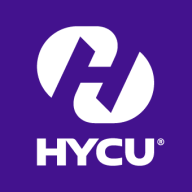

Teradata and HYCU R-Cloud are two competing products in the data management and protection domains. HYCU R-Cloud appears to have the upper hand with advanced features and superior customer satisfaction regarding value for money. Teradata presents strong pricing and support advantages.
Features: Teradata is known for high-performance data warehousing capabilities, real-time analytics, and scalability important for large enterprises handling extensive datasets. HYCU R-Cloud offers innovative backup and recovery solutions optimized for multi-cloud and hybrid cloud environments. It provides seamless integration and automated backup management, favored by customers. Teradata has strength in analytics power, while HYCU R-Cloud stands out in data protection and ease of management.
Ease of Deployment and Customer Service: HYCU R-Cloud impresses with quick, straightforward deployment minimizing downtime and operational disruptions, alongside robust customer service for smooth transitions and efficient problem resolution. Teradata may require more extensive setup time due to its comprehensive architecture but provides reliable support for troubleshooting. HYCU R-Cloud's simplified deployment is a clear strength compared to Teradata's more intricate process.
Pricing and ROI: Teradata offers competitive pricing options attractive for large-scale implementations, delivering excellent ROI through robust data analytics capabilities, though this sometimes involves higher initial setup costs due to complex requirements. HYCU R-Cloud offers a more economical initial setup with faster return, particularly attractive for organizations prioritizing cloud-based solutions. Despite Teradata's favorable pricing strategy, HYCU R-Cloud's cost-effectiveness and high ROI in cloud environments make it a preferred choice for cost-conscious businesses.


HYCU R-Cloud offers a robust, scalable data protection platform designed for cloud environments, providing comprehensive management capabilities to secure sensitive information efficiently.
HYCU R-Cloud is targeted at businesses needing reliable data protection in cloud settings. Its features focus on enhancing data safety, integrating smoothly with existing infrastructures. Users benefit from HYCU R-Cloud's adaptability in dynamic business environments where secure data backup and fast recovery are essential. As cloud data management becomes increasingly critical, HYCU R-Cloud aims to address these needs with advanced protection mechanisms. By prioritizing ease of integration and use alongside innovative technology, it supports organizations in maintaining seamless operations.
What are the key features of HYCU R-Cloud?HYCU R-Cloud is implemented across industries like healthcare and finance, where data security is paramount. Its adaptability allows it to meet specific industry requirements effectively, maintaining data integrity and compliance.
Teradata is a scalable data analytics platform designed to meet enterprise demands for large-scale data management and processing, focusing on performance, scalability, and security for complex query executions.
As a leading data warehousing solution, Teradata integrates advanced analytics enabling organizations to derive insights from massive datasets. It supports high-volume data workloads with its architecture optimized for analytical queries. Users benefit from its robust scalability, allowing seamless expansion as data grows. Teradata's SQL engine is compatible with a wide range of data types, ensuring flexibility in data analysis. With advanced security measures, it protects sensitive data across various environments, providing peace of mind to users handling critical information.
What are the most important features of Teradata?Teradata is widely used in industries like finance, telecommunications, and healthcare, where data-driven decisions are critical. Companies leverage its robust analytics capabilities to enhance customer experiences, streamline operations, and ensure compliance with regulatory requirements. In these sectors, quick access to data insights can significantly impact competitive advantage.
We monitor all Backup and Recovery reviews to prevent fraudulent reviews and keep review quality high. We do not post reviews by company employees or direct competitors. We validate each review for authenticity via cross-reference with LinkedIn, and personal follow-up with the reviewer when necessary.